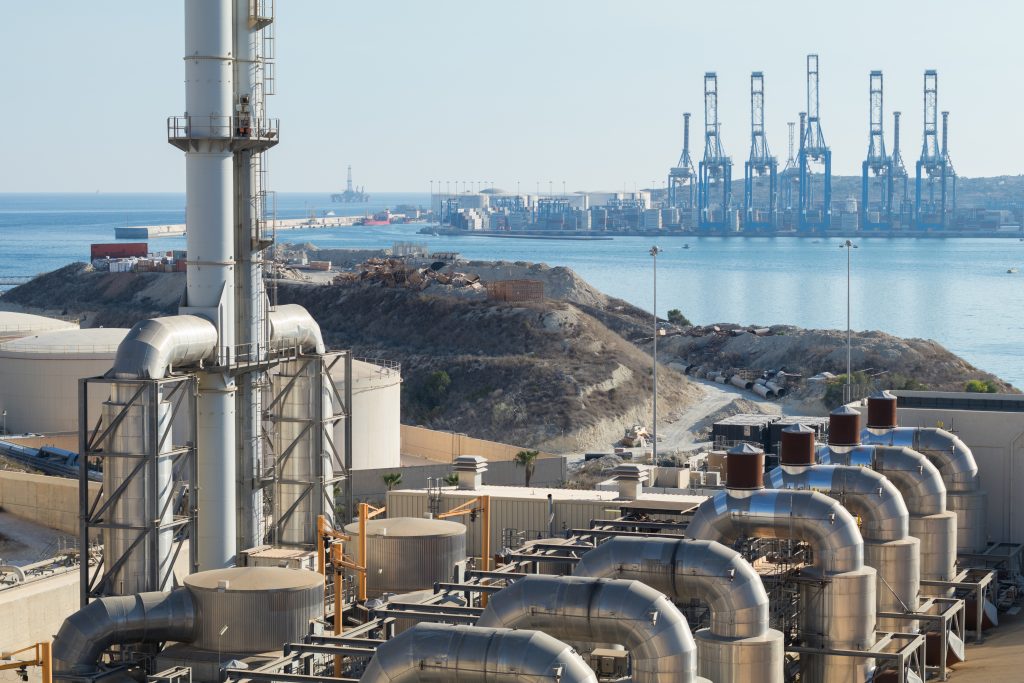Trading the 40% Plunge in American Natural Gas Prices
Natural gas prices in the United States plunged last month due to an accident that shut down one of the country’s largest natural gas export facilities, increasing available inventories within the U.S. market.

There’s been another casualty in the financial markets as natural gas prices recently succumbed to the “everything correction,” and plunged by more than 40% from recent highs.
The natural gas niche has been one of the most dynamic markets on Wall Street this year, with prices starting the year under $4/MMBtu, and then rallying all the way above $9.50/MMBtu through early June. The last time natural gas prices traded that high was August of 2008.
Unfortunately for bulls, the mean-reverting nature of the financial markets was on full display last month, as natural gas prices plunged by 41%. Natural gas is currently trading around $5.70/MMBtu—well below the $9+ highs observed earlier in the month.
The onset of a full-scale war in Eastern Europe at the end of February catalyzed a sharp spike in energy prices during H1 2022. Crude oil prices, which started the year trading around $75/barrel, are now trading around $108/barrel—good for a 44% jump year-to-date.
While crude oil prices have also retreated in recent weeks, the plunge in natural gas has been more dramatic. Since climbing over $120 on June 10, crude oil prices have dropped roughly 10%, which is a far cry from the 40% correction observed in natural gas prices.
So what’s the source of recent negative sentiment in the natural gas market?
It appears that two related narratives are pushing prices lower—a massive accident at one of the nation’s largest liquified natural gas (LNG) export facilities, and rising inventories of natural gas. The two narratives are undoubtedly linked.
On June 8, there was an incident at one of the country’s largest natural gas exporting facilities in Southeast Texas, known as Freeport LNG. The facility is located in Quintana, which is situated along the Texas Gulf Coast about 70 miles south of Houston.
During the late morning on June 8, witnesses in the area described hearing several large explosions, followed by the appearance of a large white cloud over Freeport LNG. A report filed with the Texas Commission on Environmental Quality on June 9 stated that the explosion and associated fires “led to excess emissions of carbon monoxide, nitrous oxides, particulate matter, sulfur dioxide and volatile organic compounds.”
The facility is currently offline, which is significant, because the United States has been the world’s #1 exporter of LNG in 2022, and the Freeport LNG facility has been handling roughly 20% of the daily volume.
The pause on exports at Freeport LNG means there’s suddenly a surplus of natural gas sloshing around the U.S. market. That stark reality became apparent on June 30, when the government released its weekly natural gas inventories report.
On the last day of June, the Energy Information Administration reported that natural gas inventories in the U.S. were roughly 10% higher than the week prior. This surprise build in natural gas inventories was no doubt due to the stoppage at the Freeport LNG facility.
And it doesn’t look like the facility will be back online anytime soon, which is likely why natural gas prices in the U.S. continued their descent during the last couple of trading days in June. U.S. regulators reported “unsafe conditions” at the Freeport LNG facility on June 30, and have suspended operations at the facility until further analysis is completed.
the situation at the Freeport LNG facility will likely have the opposite effect on natural gas prices in Europe. With supplies already stretched to the limit in Europe, the temporary suspension of exports from the U.S. via the Freeport LNG facility will undoubtedly push prices even higher in Europe—at least temporarily.
Supplies of natural gas in Europe are currently 20% below their 5-year average, and prices have responded accordingly. In the U.S., natural gas futures are quoted in MMBtu, which represents one million British Thermal Units (BTU). In Europe, however, natural gas futures prices are commonly in terms of a megawatt-hour.
Prior to 2021, the price of natural gas in Europe had never climbed above the €30 megawatt-hour level. But during 2022, intraday trading in March saw prices spike as high as €270 a megawatt-hour.
That price spike moderated in spring as a direct result of increased American natural gas prices to Europe. But since the Freeport LNG accident, natural gas prices in Europe have once again tracked higher, as illustrated in the chart below.
The above illustrates just how important exports of U.S. natural gas have become for European customers. And considering recent market action, it seems certain that ongoing news developments concerning the Freeport LNG facility will continue to impact the market—both in the U.S. and abroad.
Natural gas is used extensively to heat and cool homes and businesses in the U.S. and Europe. So with the winter season looming, it’s likely that ongoing shortages will also be constructive for prices in both regions.
From that perspective, the current correction in American natural gas prices may actually represent an opportunity—especially for those investors and traders that don’t expect the Russia-Ukraine conflict to end anytime soon.
To track and trade the natural gas sector, readers may want to add the following symbols to their watchlists:
- Antero Resources Corporation (AR)
- Cabot Corporation (CBT)
- Cheniere Energy (LNG)
- Chesapeake Energy (CHK)
- Chevron Corporation (CVX)
- Coterra Energy (CTRA)
- DCP Midstream LP (DCP)
- EQT Corporation (EQT)
- iPath Series B Bloomberg Natural Gas Subindex Total Return ETN (GAZ)
- Kinder Morgan (KMI)
- ProShares Ultra Bloomberg Natural Gas (BOIL)
- ProShares UltraShort Bloomberg Natural Gas (KOLD)
- Range Resources Corporation (RRC)
- Southwestern Energy (SWN)
- United States Natural Gas Fund LP (UNG)
- Vermilion Energy (VET)
- Western Midstream Partners (WES)
For more background on the natural gas trade, check out this installment of Market Measures on the tastytrade financial network, as well as this new episode of Splash Into Futures.
To follow everything moving the financial markets on a daily basis, tune into TASTYTRADE LIVE—weekdays from 7 a.m. to 4 p.m. CDT.
Sage Anderson is a pseudonym. He’s an experienced trader of equity derivatives and has managed volatility-based portfolios as a former prop trading firm employee. He’s not an employee of Luckbox, tastytrade or any affiliated companies. Readers can direct questions about this blog or other trading-related subjects, to support@luckboxmagazine.com.



















